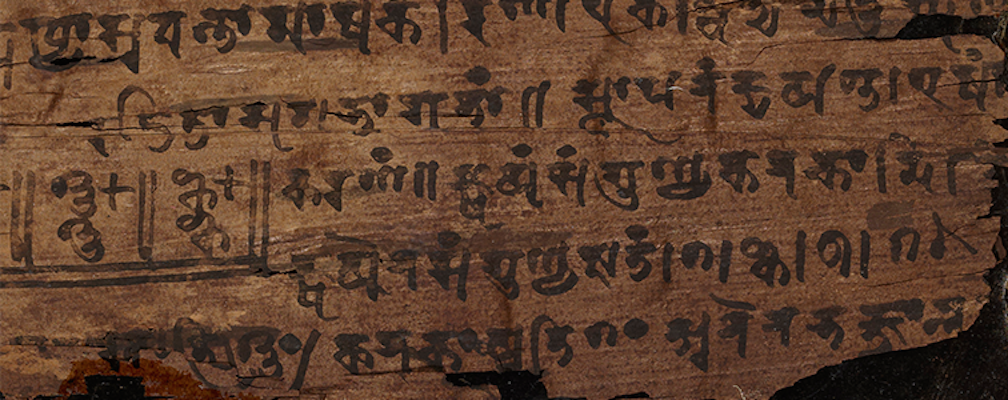Found: The Oldest Example of the Symbol for ‘Zero’
A manuscript full of nothings dates back to the 3rd or 4th century.
How do you represent nothing? It sounds like a Zen kōan. If you’d never heard of the idea of “zero,” then it would be a little mind-bending to imagine what nothing ought to look like. (Europeans, notably, had a hard time when first presented with the concept.) But it is a useful concept, so over the centuries, mathematicians around the world have come up with symbols to use to denote an absence of value. Sumerians used a double-wedge, the Maya had an eye. In India, it was a dot, and that’s the symbol that eventually became the “0” used today.
For a time, the oldest known example of the dot-zero was located a temple in Madhya Pradesh and dates back to the 9th century. More recently, a 7th-century dot emerged as the oldest known example, on a bill of sale from Cambodia.
Now, however, an South Asian manuscript with hundreds examples of the dot-zero has been radiocarbon-dated, and at least part of it even older. Some fragments of the Bakhshali manuscript, held at the Bodleian Library at the University of Oxford, date back to the 3rd or 4th century, making its zeros the oldest known examples of that symbol, The Guardian reports.

The Bakhshali manuscript was originally discovered in 1881, by a farmer working fields in what is now Pakistan. The fragmentary manuscript contains what appear to be math exercises for merchants on the Silk Road, intended to teach the calculations they’d need to conduct business.
For many years, though, the date of these birch bark documents was debated. The most accepted analysis put them somewhere between the 8th and 12th centuries, based on their contents. The Bodleian tested three different samples, which produced three different ages. The most recent fragment dates to sometime between 850 and 993, and the oldest to between 224 and 383.
The dot-zero wasn’t exactly used as a number—it was more of a place-holder. The idea of zero as a number in its own right came later, in a 628 text by the Indian mathematician Brahmagupta. As the concept of zero grew in use, the dot symbols started to expand, until they had that familiar gaping hole in the middle.
















Follow us on Twitter to get the latest on the world's hidden wonders.
Like us on Facebook to get the latest on the world's hidden wonders.
Follow us on Twitter Like us on Facebook